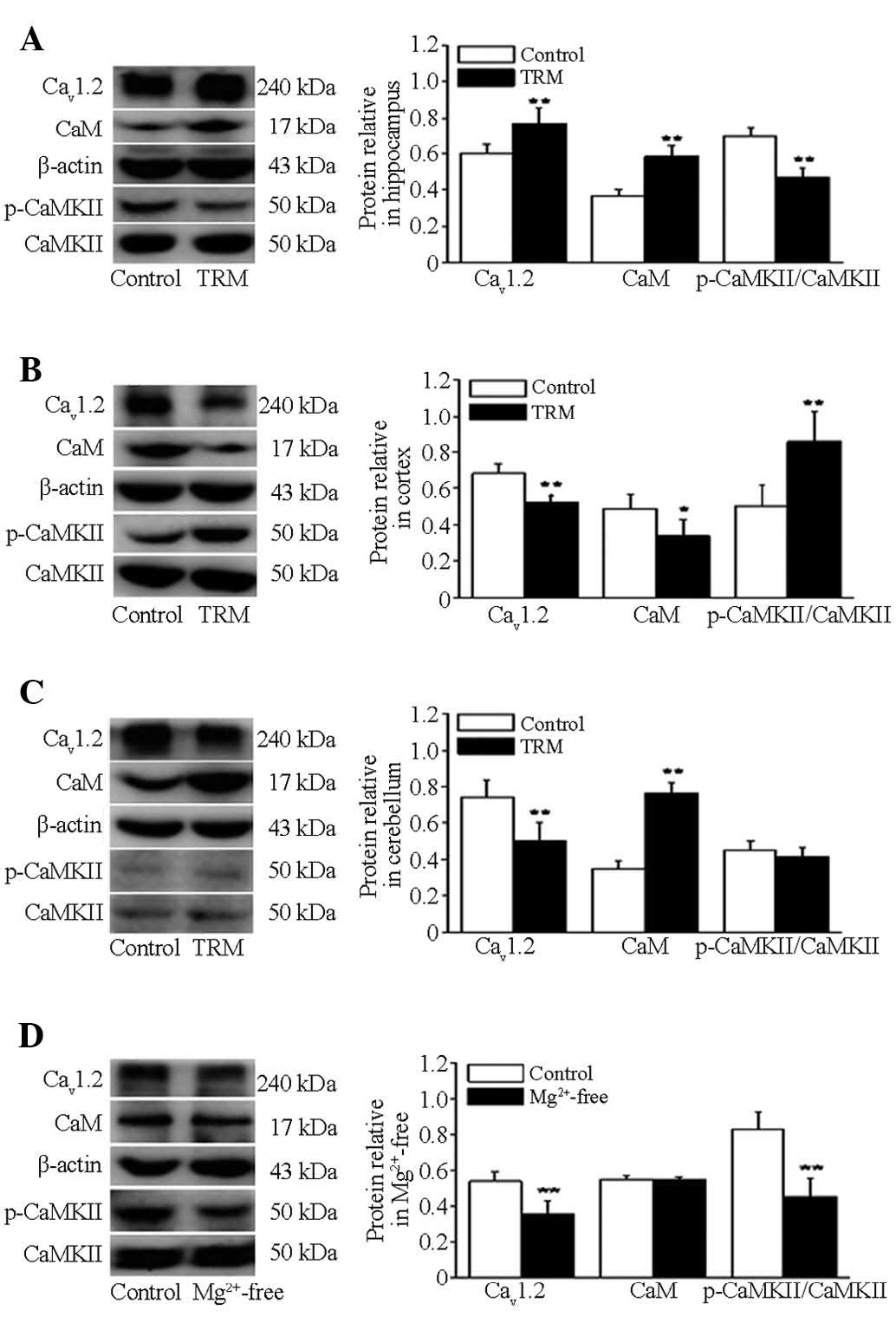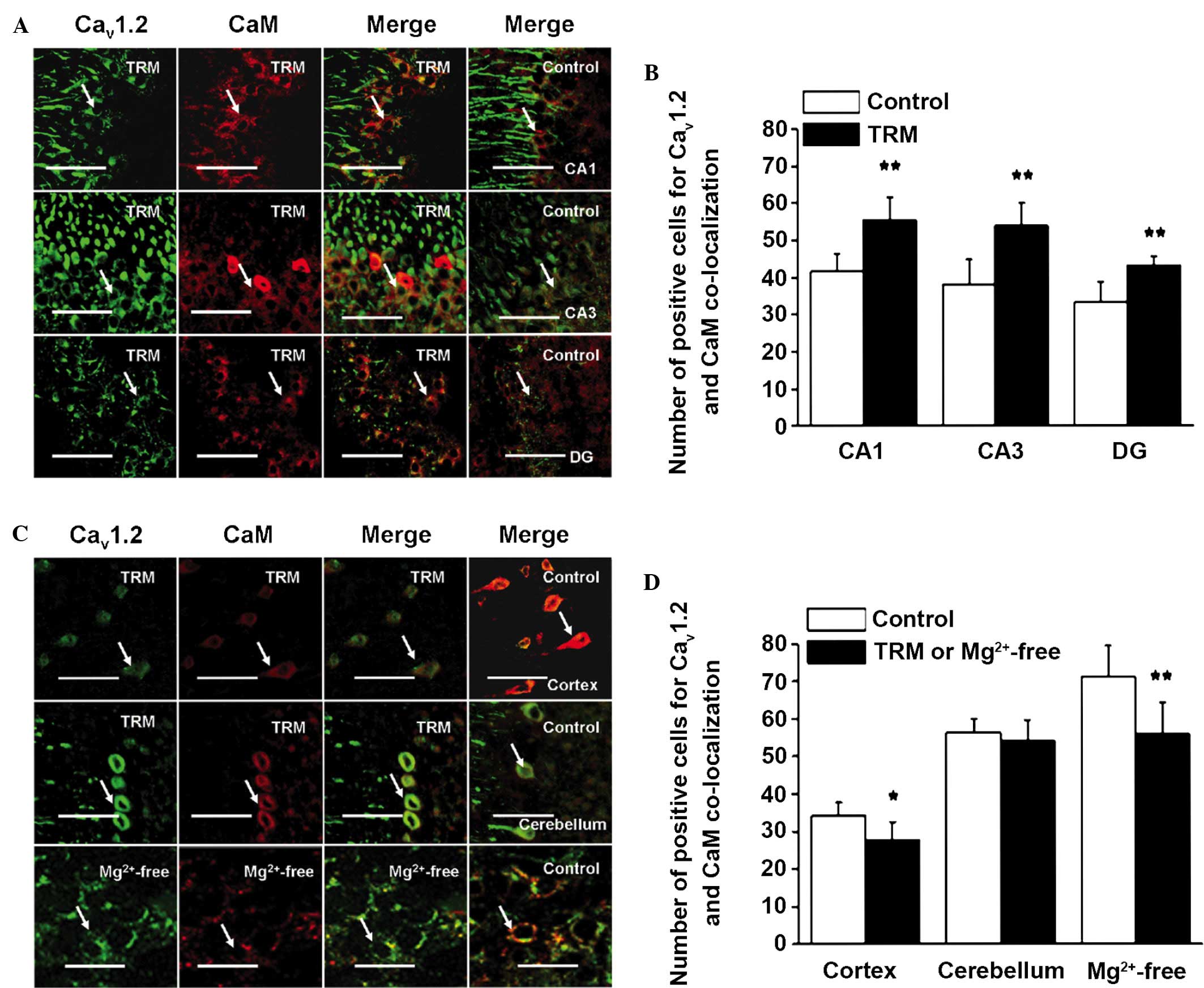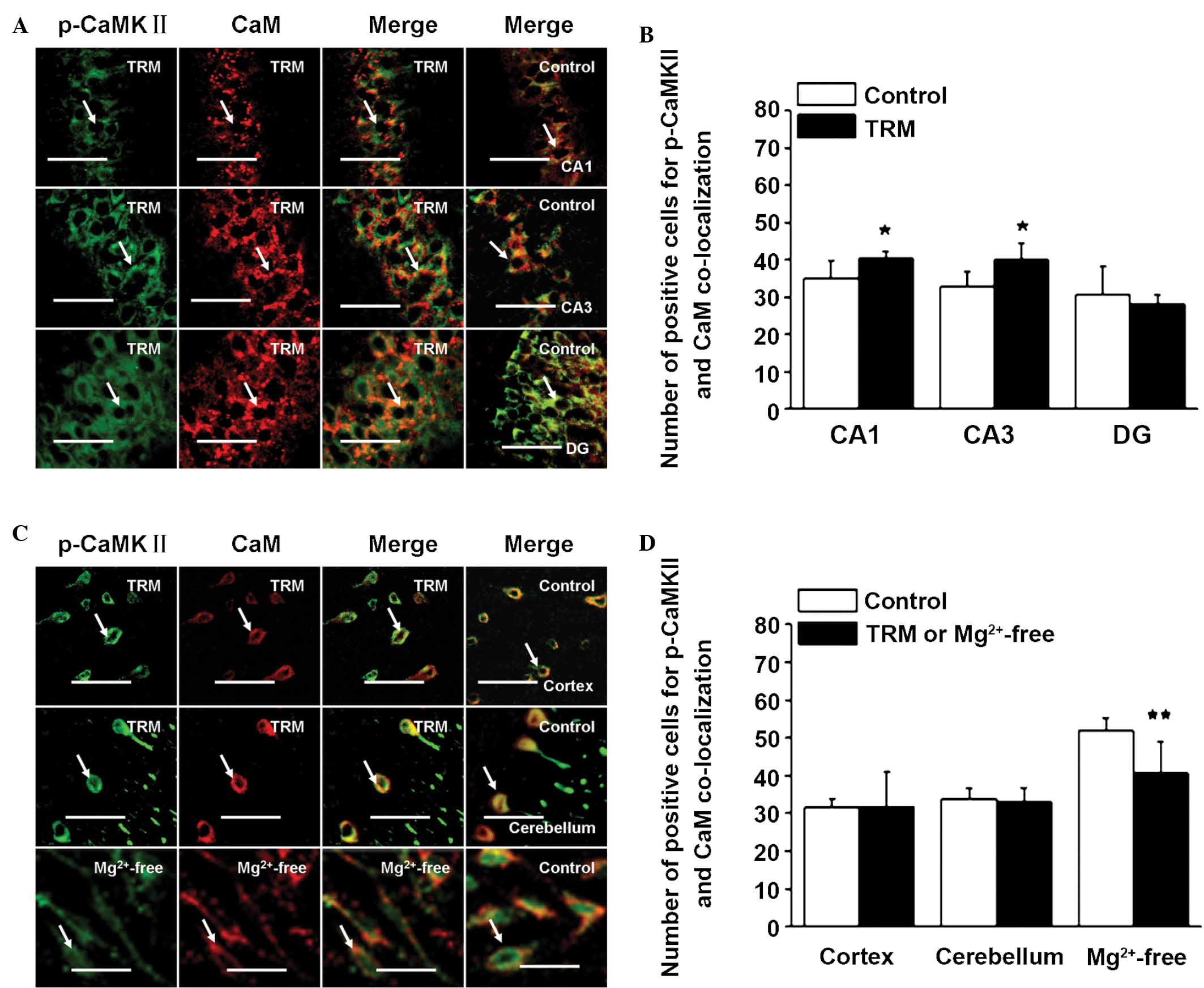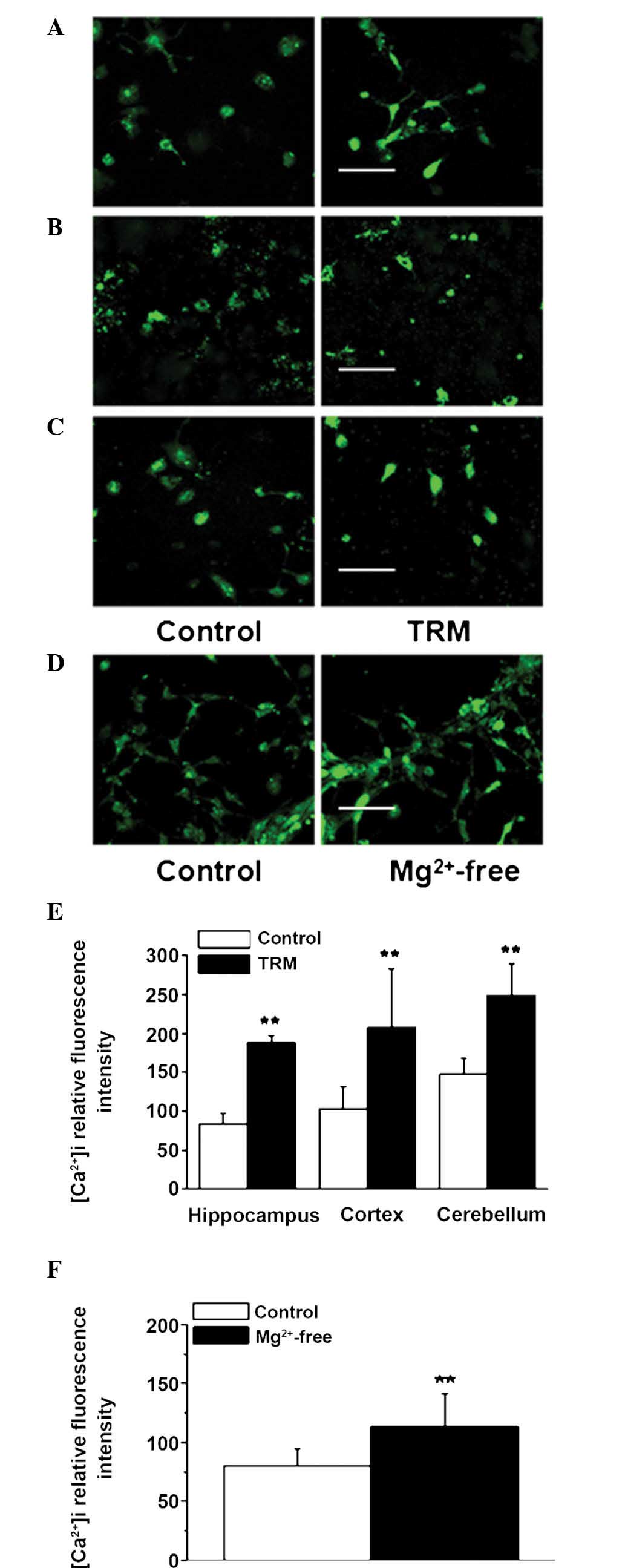|
1
|
Moseley BD, Wirrell EC, Wong-Kisiel LC and
Nickels K: Early onset epilepsy is associated with increased
mortality: A population-based study. Epilepsy Res. 105:410–414.
2013. View Article : Google Scholar : PubMed/NCBI
|
|
2
|
Nakatani Y, Masuko H and Amano T: Effect
of lamotrigine on Na(v)1.4 voltage-gated sodium channels. J
Pharmacol Sci. 123:203–206. 2013. View Article : Google Scholar : PubMed/NCBI
|
|
3
|
N'Gouemo P, Yasuda R and Faingold CL:
Seizure susceptibility is associated with altered protein
expression of voltage-gated calcium channel subunits in inferior
colliculus neurons of the genetically epilepsy-prone rat. Brain
Res. 1308:153–157. 2010. View Article : Google Scholar
|
|
4
|
Arikkath J and Campbell KP: Auxiliary
subunits: Essential components of the voltage-gated calcium channel
complex. Curr Opin Neurobiol. 13:298–307. 2003. View Article : Google Scholar : PubMed/NCBI
|
|
5
|
Leitch B, Shevtsova O, Guevremont D and
Williams J: Loss of calcium channels in the cerebellum of the
ataxic and epileptic stargazer mutant mouse. Brain Res.
1279:156–167. 2009. View Article : Google Scholar : PubMed/NCBI
|
|
6
|
Obermair GJ, Szabo Z, Bourinet E and
Flucher BE: Differential targeting of the L-type Ca2+ channel alpha
1C (CaV1.2) to synaptic and extrasynaptic compartments in
hippocampal neurons. Eur J Neurosci. 19:2109–2122. 2004. View Article : Google Scholar : PubMed/NCBI
|
|
7
|
Xu JH, Long L, Tang YC, Hu HT and Tang FR:
Ca(v)1.2, Ca(v)1.3 and Ca(v)2.1 in the mouse hippocampus during and
after pilocarpine-induced status epilepticus. Hippocampus.
17:235–251. 2007. View Article : Google Scholar
|
|
8
|
Grueter CE, Abiria SA, Dzhura I, Wu Y, Ham
AJ, Mohler PJ, Anderson ME and Colbran RJ: L-type Ca2+ channel
facilitation mediated by phosphorylation of the beta subunit by
CaMKII. Mol Cell. 23:641–650. 2006. View Article : Google Scholar : PubMed/NCBI
|
|
9
|
Hao LY, Wang WY, Minobe E, Han DY, Xu JJ,
Kameyama A and Kameyama M: The distinct roles of calmodulin and
calmodulin kinase II in the reversal of run-down of L-type Ca(2+)
channels in guinea-pig ventricular myocytes. J Pharmacol Sci.
111:416–425. 2009. View Article : Google Scholar : PubMed/NCBI
|
|
10
|
Minobe E, Asmara H, Saud ZA and Kameyama
M: Calpastatin domain L is a partial agonist of the
calmodulin-binding site for channel activation in Cav1.2 Ca2+
channels. J Biol Chem. 286:39013–39022. 2011. View Article : Google Scholar : PubMed/NCBI
|
|
11
|
Wang WY, Hao LY, Minobe E, Saud ZA, Han DY
and Kameyama M: CaMKII phosphorylates a threonine residue in the
C-terminal tail of Cav1.2 Ca(2+) channel and modulates the
interaction of the channel with calmodulin. J Physiol Sci.
59:283–290. 2009. View Article : Google Scholar : PubMed/NCBI
|
|
12
|
Dolmetsch RE, Pajvani U, Fife K, Spotts JM
and Greenberg ME: Signaling to the nucleus by an L-type calcium
channel-calmodulin complex through the MAP kinase pathway. Science.
294:333–339. 2001. View Article : Google Scholar : PubMed/NCBI
|
|
13
|
Asmara H, Minobe E, Saud ZA and Kameyama
M: Interactions of calmodulin with the multiple binding sites of
Cav1.2 Ca2+ channels. J Pharmacol Sci. 112:397–404. 2010.
View Article : Google Scholar : PubMed/NCBI
|
|
14
|
Dick IE, Tadross MR, Liang H, Tay LH, Yang
W and Yue DT: A modular switch for spatial Ca2+ selectivity in the
calmodulin regulation of CaV channels. Nature. 451:830–834. 2008.
View Article : Google Scholar : PubMed/NCBI
|
|
15
|
Guo F, Minobe E, Yazawa K, Asmara H, Bai
XY, Han DY, Hao LY and Kameyama M: Both N- and C-lobes of
calmodulin are required for Ca2+-dependent regulations of CaV1.2
Ca2+ channels. Biochem Biophys Res Commun. 391:1170–1176. 2010.
View Article : Google Scholar
|
|
16
|
Han DY, Minobe E, Wang WY, Guo F, Xu JJ,
Hao LY and Kameyama M: Calmodulin- and Ca2+-dependent facilitation
and inactivation of the Cav1.2 Ca2+ channels in guinea-pig
ventricular myocytes. J Pharmacol Sci. 112:310–319. 2010.
View Article : Google Scholar : PubMed/NCBI
|
|
17
|
Peterson BZ, DeMaria CD, Adelman JP and
Yue DT: Calmodulin is the Ca2+ sensor for Ca2+-dependent
inactivation of L-type calcium channels. Neuron. 22:549–558. 1999.
View Article : Google Scholar : PubMed/NCBI
|
|
18
|
Tang W, Halling DB, Black DJ, Pate P,
Zhang JZ, Pedersen S, Altschuld RA and Hamilton SL: Apocalmodulin
and Ca2+ calmodulin-binding sites on the CaV1.2 channel. Biophys J.
85:1538–1547. 2003. View Article : Google Scholar : PubMed/NCBI
|
|
19
|
Erondu NE and Kennedy MB: Regional
distribution of type II Ca2+/calmodulin-dependent protein kinase in
rat brain. J Neurosci. 5:3270–3277. 1985.PubMed/NCBI
|
|
20
|
Zhang L, Kirschstein T, Sommersberg B,
Merkens M, Manahan-Vaughan D, Elgersma Y and Beck H: Hippocampal
synaptic metaplasticity requires inhibitory autophosphorylation of
Ca2+/calmodulin-dependent kinase II. J Neurosci. 25:7697–7707.
2005. View Article : Google Scholar : PubMed/NCBI
|
|
21
|
Rich RC and Schulman H: Substrate-directed
function of calmodulin in autophosphorylation of
Ca2+/calmodulin-dependent protein kinase II. J Biol Chem.
273:28424–28429. 1998. View Article : Google Scholar : PubMed/NCBI
|
|
22
|
Welsby PJ, Wang H, Wolfe JT, Colbran RJ,
Johnson ML and Barrett PQ: A mechanism for the direct regulation of
T-type calcium channels by Ca2+/calmodulin-dependent kinase II. J
Neurosci. 23:10116–10121. 2003.PubMed/NCBI
|
|
23
|
Dzhura I, Wu Y, Colbran RJ, Balser JR and
Anderson ME: Calmodulin kinase determines calcium-dependent
facilitation of L-type calcium channels. Nat Cell Biol. 2:173–177.
2000. View Article : Google Scholar : PubMed/NCBI
|
|
24
|
Hudmon A, Schulman H, Kim J, Maltez JM,
Tsien RW and Pitt GS: CaMKII tethers to L-type Ca2+ channels,
establishing a local and dedicated integrator of Ca2+ signals for
facilitation. J Cell Biol. 171:537–547. 2005. View Article : Google Scholar : PubMed/NCBI
|
|
25
|
Singleton MW, Holbert WH II, Lee AT,
Bracey JM and Churn SB: Modulation of CaM kinase II activity is
coincident with induction of status epilepticus in the rat
pilocarpine model. Epilepsia. 46:1389–1400. 2005. View Article : Google Scholar : PubMed/NCBI
|
|
26
|
Seki T, Matsubayashi H, Amano T, Kitada K,
Serikawa T, Sasa M and Sakai N: Adenoviral gene transfer of
aspartoacylase ameliorates tonic convulsions of spontaneously
epileptic rats. Neurochem Int. 45:171–178. 2004. View Article : Google Scholar : PubMed/NCBI
|
|
27
|
Hanaya R, Sasa M, Ujihara H, Fujita Y,
Amano T, Matsubayashi H, Serikawa T and Uozumi T: Effect of
antiepileptic drugs on absence-like seizures in the tremor rat.
Epilepsia. 36:938–942. 1995. View Article : Google Scholar : PubMed/NCBI
|
|
28
|
Blair RE, Sombati S, Churn SB and
Delorenzo RJ: Epileptogenesis causes an N-methyl-d-aspartate
receptor/Ca2+-dependent decrease in Ca2+/calmodulin-dependent
protein kinase II activity in a hippocampal neuronal culture model
of spontaneous recurrent epileptiform discharges. Eur J Pharmacol.
588:64–71. 2008. View Article : Google Scholar : PubMed/NCBI
|
|
29
|
Serikawa T, Ohno Y, Sasa M, Yamada J and
Takaori S: A new model of petit mal epilepsy: Spontaneous spike and
wave discharges in tremor rats. Lab Anim. 21:68–71. 1987.
View Article : Google Scholar : PubMed/NCBI
|
|
30
|
Seki T, Matsubayashi H, Amano T, Kitada K,
Serikawa T, Sakai N and Sasa M: Adenoviral gene transfer of
aspartoacylase into the tremor rat, a genetic model of epilepsy, as
a trial of gene therapy for inherited epileptic disorder. Neurosci
Lett. 328:249–252. 2002. View Article : Google Scholar : PubMed/NCBI
|
|
31
|
Sombati S and Delorenzo RJ: Recurrent
spontaneous seizure activity in hippocampal neuronal networks in
culture. J Neurophysiol. 73:1706–1711. 1995.PubMed/NCBI
|
|
32
|
Guo F, Xu X, Cai J, Hu H, Sun W, He G,
Shao D, Wang L, Chen T, Shaw C, et al: The up-regulation of
voltage-gated sodium channels subtypes coincides with an increased
sodium current in hippocampal neuronal culture model. Neurochem
Int. 62:287–295. 2013. View Article : Google Scholar : PubMed/NCBI
|
|
33
|
Li XM, Li JG, Yang JM, Hu P, Li XW, Wang
Y, Qin LN and Gao TM: An improved method for acute isolation of
neurons from the hippocampus of adult rats suitable for
patch-clamping study. Sheng Li Xue Bao. 56:112–117. 2004.PubMed/NCBI
|
|
34
|
Min D, Guo F, Zhu S, Xu X, Mao X, Cao Y,
Lv X, Gao Q, Wang L, Chen T, et al: The alterations of
Ca2+/calmodulin/CaMKII/CaV1.2 signaling in experimental models of
Alzheimer's disease and vascular dementia. Neurosci Lett.
538:60–65. 2013. View Article : Google Scholar : PubMed/NCBI
|
|
35
|
Kuramoto T, Mori M, Yamada J and Serikawa
T: Tremor and zitter, causative mutant genes for epilepsy with
spongiform encephalopathy in spontaneously epileptic rat (SER), are
tightly linked to synaptobrevin-2 and prion protein genes,
respectively. Biochem Biophys Res Commun. 200:1161–1168. 1994.
View Article : Google Scholar : PubMed/NCBI
|
|
36
|
Cao HY, Jiang YW, Liu ZW and Wu XR: Effect
of recurrent epileptiform discharges induced by magnesium-free
treatment on developing cortical neurons in vitro. Brain Res Dev
Brain Res. 142:1–6. 2003. View Article : Google Scholar : PubMed/NCBI
|
|
37
|
Badea T, Goldberg J, Mao B and Yuste R:
Calcium imaging of epileptiform events with single-cell resolution.
J Neurobiol. 48:215–227. 2001. View Article : Google Scholar : PubMed/NCBI
|
|
38
|
Srinivas KV and Sikdar SK: Epileptiform
'activity induces distance-dependent alterations of the Ca2+
extrusion mechanism in the apical dendrites of subicular pyramidal
neurons. Eur J Neurosci. 28:2195–2212. 2008. View Article : Google Scholar : PubMed/NCBI
|
|
39
|
Pal S, Sombati S, Limbrick DD Jr and
DeLorenzo RJ: In vitro status epilepticus causes sustained
elevation of intracellular calcium levels in hippocampal neurons.
Brain Res. 851:20–31. 1999. View Article : Google Scholar
|
|
40
|
Zhang J, Ding MP, Liu Z, Xiao B, Li GL and
Zhou FY: Dynamics of calcium in the hippocampal neuronal culture
model of epilepsy. Zhongguo Ying Yong Sheng Li Xue Za Zhi.
23:200–203. 2007.In Chinese. PubMed/NCBI
|
|
41
|
Amano T, Amano H, Matsubayashi H, Ishihara
K, Serikawa T and Sasa M: Enhanced Ca(2+) influx with mossy fiber
stimulation in hippocampal CA3 neurons of spontaneously epileptic
rats. Brain Res. 910:199–203. 2001. View Article : Google Scholar : PubMed/NCBI
|
|
42
|
Naderi N, Ahmad-Molaei L, Mazar-Atabaki A,
Ronaghi A, Shirazi-zand Z, Motiei-Langroudi SM and Eslahkar S:
L-type calcium channel mediates anticonvulsant effect of
cannabinoids in acute and chronic murine models of seizure.
Neurochem Res. 37:279–287. 2012. View Article : Google Scholar
|
|
43
|
Becker AJ, Pitsch J, Sochivko D, Opitz T,
Staniek M, Chen CC, Campbell KP, Schoch S, Yaari Y and Beck H:
Transcriptional upregulation of Cav3.2 mediates epileptogenesis in
the pilocarpine model of epilepsy. J Neurosci. 28:13341–13353.
2008. View Article : Google Scholar : PubMed/NCBI
|
|
44
|
Yan HD, Ishihara K, Hanaya R, Kurisu K,
Serikawa T and Sasa M: Voltage-dependent calcium channel
abnormalities in hippocampal CA3 neurons of spontaneously epileptic
rats. Epilepsia. 48:758–764. 2007. View Article : Google Scholar : PubMed/NCBI
|
|
45
|
Lie AA, Blümcke I, Volsen SG, Wiestler OD,
Elger CE and Beck H: Distribution of voltage-dependent calcium
channel beta subunits in the hippocampus of patients with temporal
lobe epilepsy. Neuroscience. 93:449–456. 1999. View Article : Google Scholar : PubMed/NCBI
|
|
46
|
Carter DS, Haider SN, Blair RE, Deshpande
LS, Sombati S and DeLorenzo RJ: Altered calcium/calmodulin kinase
II activity changes calcium homeostasis that underlies epileptiform
activity in hippocampal neurons in culture. J Pharmacol Exp Ther.
319:1021–1031. 2006. View Article : Google Scholar : PubMed/NCBI
|
|
47
|
Wang P, Wang WP, Sun-Zhang, Wang HX, Yan
Lou and Fan YH: Impaired spatial learning related with decreased
expression of calcium/calmodulin-dependent protein kinase IIalpha
and cAMP-response element binding protein in the
pentylenetetrazol-kindled rats. Brain Res. 1238:108–117. 2008.
View Article : Google Scholar : PubMed/NCBI
|
|
48
|
Zha XM, Dailey ME and Green SH: Role of
Ca2+/calmodulin-dependent protein kinase II in dendritic spine
remodeling during epileptiform activity in vitro. J Neurosci Res.
87:1969–1979. 2009. View Article : Google Scholar : PubMed/NCBI
|















